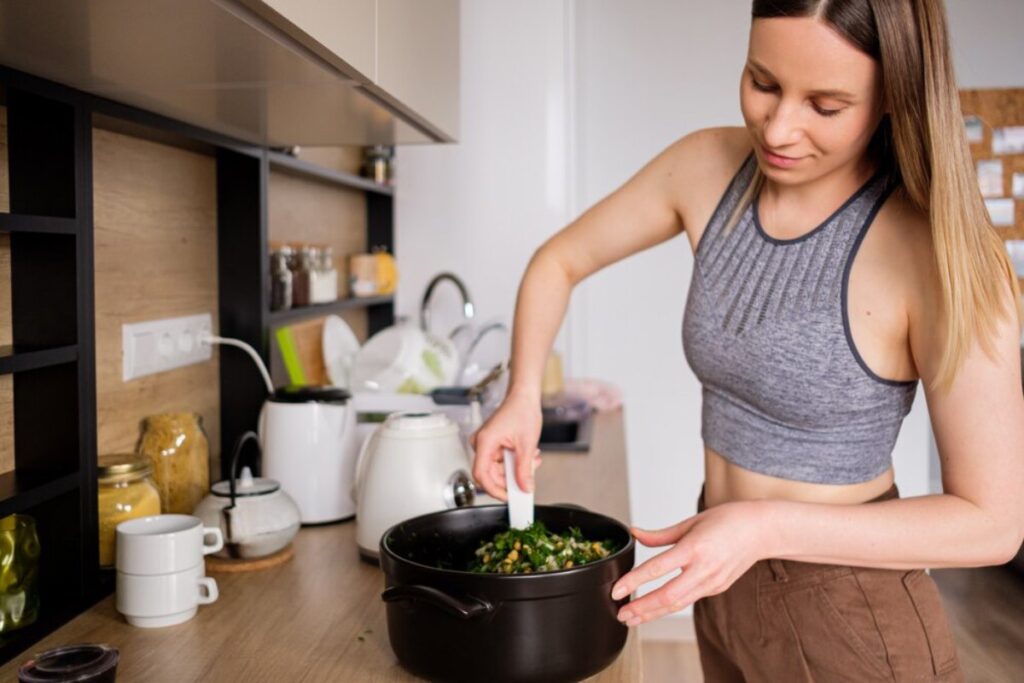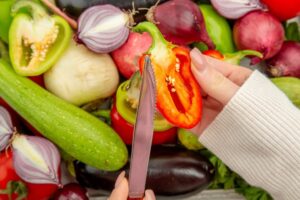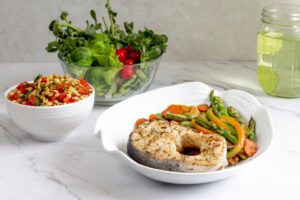The Health & Wellness Blog

How to Cook Anti-Inflammatory Meals
Cooking Take Away Inflammatory Meal Is Easy. You don’t have to overhaul your life or possess chef-level skills. It starts with understanding how food influences inflammation in your body. This guide is here to make it easier to make smart choices in the kitchen. With simple ingredients, useful tips and persistence, you can make meals that promote your health and taste good.
From my years of research on wellness and meal planning, I’ve learned that cooking with anti-inflammatory principles will pay dividends for the long haul. It’s not only about preventing chronic illness. It’s also about feeling energised, reducing discomfort, and nourishing your body. Best of all, it all begins in your kitchen.
Understanding the Core
An anti-inflammatory diet consists of whole foods that are rich in nutrients and assist your body in fighting inflammation. Chronic inflammation can lead to health problems such as arthritis, heart disease and digestive difficulties. Preparing dishes that include anti-inflammatory foods can reduce these risks and improve your overall health.
Key ingredients in anti-inflammatory cooking include:
- Colourful vegetables and fruits
- Healthy fats like olive oil and avocado
- Fatty fish such as salmon and sardines
- Spices like turmeric, ginger, and garlic
- Whole grains, legumes, and nuts
It’s also important to avoid processed foods, added sugars, and refined carbs. The goal is to create balance and nourishment in every dish.
Quick Guide
- Stock your kitchen with anti-inflammatory staples: leafy greens, berries, olive oil, wild-caught fish, and turmeric.
- Choose simple recipes that focus on whole foods and limit processed items.
- Add herbs and spices like ginger and garlic for extra flavour and health benefits.
- Use healthy cooking methods such as roasting, steaming, and sautéing in olive oil.
- Plan your meals for the week to stick to anti-inflammatory eating.
Step-by-Step Guide
Step 1: Build a Solid Pantry
Start by swapping refined pantry items for whole, anti-inflammatory options. Use brown rice instead of white rice, olive oil instead of vegetable oil, and unsalted nuts instead of sugary snacks.
Pro Tip: Set up a spice rack with anti-inflammatory herbs like cinnamon, turmeric, and oregano. They’re powerful and easy to use daily.

Step 2: Choose the Right Protein
Pick lean proteins like:
- Wild-caught fish (rich in omega-3s)
- Organic chicken or turkey
- Plant-based options like lentils, chickpeas, or tofu
Stay away from processed meats like sausages or deli meats, as they can promote inflammation.
Step 3: Focus on Whole Produce
Fill half your plate with vegetables at every meal. Cruciferous veggies like broccoli and kale, plus antioxidant-rich fruits like blueberries and oranges, are great for reducing inflammation.
Important Tip: Frozen fruits and veggies are just as nutritious as fresh ones and last longer. They’re perfect for quick anti-inflammatory smoothies or sautés.
Step 4: Cook with Healthy Fats
Healthy fats are key in anti-inflammatory cooking. Use extra virgin olive oil for low to medium heat cooking or salad dressings. Avocados, nuts, and seeds are also excellent sources.
Avoid trans fats and refined oils, like canola or soybean oil, which can worsen inflammation.
Step 5: Use Healing Spices
Spices boost flavour and offer health benefits. Turmeric is especially known for curcumin, its anti-inflammatory compound. Combine it with black pepper to enhance absorption.
Other spices to use:
- Ginger for digestive support
- Garlic for immune support
- Rosemary and thyme for added antioxidants
Step 6: Prepare Balanced Meals
Each meal should include fiber, healthy fats, protein, and complex carbs. This supports blood sugar balance and keeps inflammation in check.
Sample meal idea:
- Grilled salmon with quinoa and steamed kale, drizzled with lemon and olive oil.
Important Notes
- Watch for hidden sugars and additives in sauces, dressings, and packaged goods.
- Avoid overcooking vegetables to keep their nutrients. Steaming or roasting at moderate temperatures is best.
- Stay hydrated. Water helps flush toxins and supports cellular function.
Best Practices and Additional Insights
- Meal prep in advance. Cooking staples like roasted veggies, grilled chicken, and cooked grains make weeknight meals easier.
- Practice mindful eating. Enjoying your meals without distractions aids digestion and improves your relationship with food.
- Stay flexible. You don’t need perfection. Even one anti-inflammatory meal a day can help.
- Experiment often. Rotate ingredients to avoid boredom and ensure a variety of nutrients.
Pro Tip: Batch-make soups and stews with anti-inflammatory ingredients like lentils, turmeric, carrots, and leafy greens. Freeze leftovers for busy days.

FAQs
What are the best oils for anti-inflammatory cooking?
Extra virgin olive oil and avocado oil are ideal. Coconut oil can also be used occasionally for medium-heat cooking.
Can I eat grains on an anti-inflammatory diet?
Yes, but stick to whole grains like oats, brown rice, quinoa, and buckwheat. Avoid refined grains.
Is dairy allowed?
Some people may be sensitive to dairy, which can cause inflammation. Choose fermented dairy like yogurt or try non-dairy options like almond or oat milk.
How often should I eat anti-inflammatory meals?
Aim for one to two anti-inflammatory meals each day, gradually increasing to a full day.
What’s a simple anti-inflammatory breakfast idea?
Try overnight oats with chia seeds, blueberries, and a drizzle of honey, or a veggie omelette with spinach and tomatoes cooked in olive oil.
Nourish to Flourish
Anti-inflammatory dishes are smart health food. By utilising whole foods, mindful preparation and potent natural ingredients, you can make meals that are healing while still tasting good. And don’t forget, it’s not about perfection — it’s about progress. Every wholesome morsel of food pushes you closer to vibrant living.









